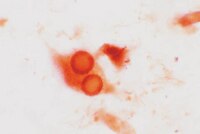Parkinson's disease transgenic mitochondrial cybrids generate Lewy inclusion bodies.
Trimmer, Patricia A, et al.
J. Neurochem., 88: 800-12 (2004)
2004
Show Abstract
Many models of Parkinson's disease (PD) have succeeded in replicating dopaminergic neuron loss or alpha-synuclein aggregation but not the formation of classical Lewy bodies, the pathological hallmark of PD. Our cybrid model of sporadic PD was created by introducing the mitochondrial genes from PD patients into neuroblastoma cells that lack mitochondrial DNA. Previous studies using cybrids have shown that information encoded by mitochondrial DNA in patients contributes to many pathogenic features of sporadic PD. In this paper, we report the generation of fibrillar and vesicular inclusions in a long-term cybrid cell culture model that replicates the essential antigenic and structural features of Lewy bodies in PD brain without the need for exogenous protein expression or inhibition of mitochondrial or proteasomal function. The inclusions generated by PD cybrid cells stained with eosin, thioflavin S, and antibodies to alpha-synuclein, ubiquitin, parkin, synphilin-1, neurofilament, beta-tubulin, the proteasome, nitrotyrosine, and cytochrome c. Future studies of these cybrids will enable us to better understand how Lewy bodies form and what role they play in the pathogenesis of PD. | 14756800
 |









